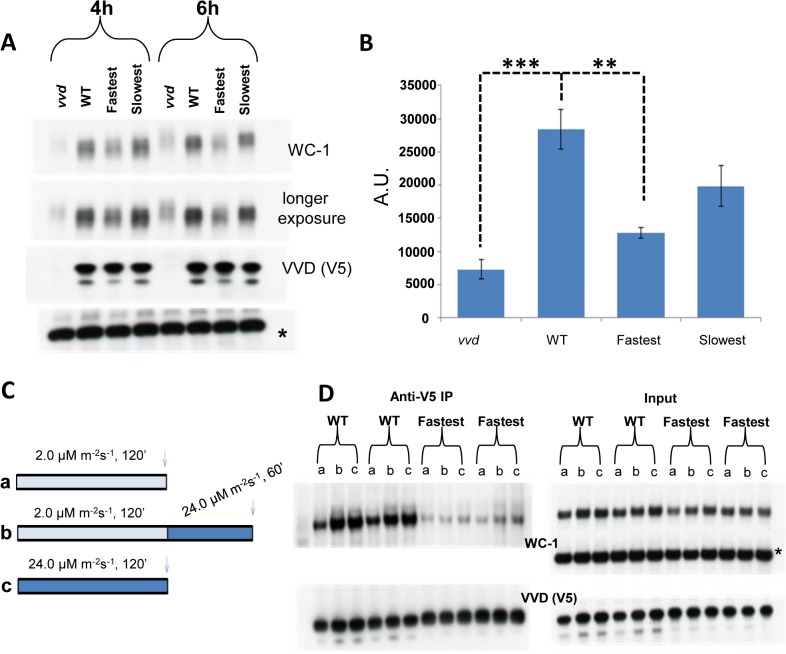Fig 4. Reduced VVD-WCC interaction influences WC-1 stability in the fastest photocycle mutant and the system’s ability to respond to changing light intensity.
(A) Strains were exposed to constant blue light (~30 μM m-2s-1) for 4 and 6 hours. Protein samples were harvested in the presence of phosphatase inhibitors and WC-1 stability was examined using Western blotting techniques. 6% Tris-Glycine gels were used instead of 3–8% Tris-Acetate gels for greater resolution. (B) 3 blots from the 6 hour time point were quantified via densitometry using NIH Image J software. (C) Experimental design to examine the WT and fastest photocycle strains response to an increase in light intensity. Strains were either exposed to low light (blue) intensity (a), high light (blue) intensity (c) or low light intensity (blue) followed by exposure to high light (blue) intensity (b). (D) Co-IP experiments (duplicate biological replicates shown) were performed after cross linking as previously described in Fig 3 legend to examine VVD-WCC interaction after light treatments shown in (C); a,b and c on the blots correspond to conditions in (C) * non specific band /loading control. Asterisks indicate statistical significance when compared with WT as determined by an unpaired t test. ***P<0.001, **P<0.01.

